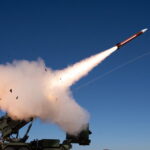
To counter growing threats posed by small drones operating near airports, whether due to ignorance or criminal activity, state and local law enforcement agencies need legal authorities from Congress to be able to mitigate the impacts of unmanned aircraft systems (UAS) on airport operations, says the final report of a task force that examined the issue of unauthorized UAS around airports. “The deputation of counter-UAS authority to these officials should begin with a pilot program overseen by the Department of…

 By
By 











